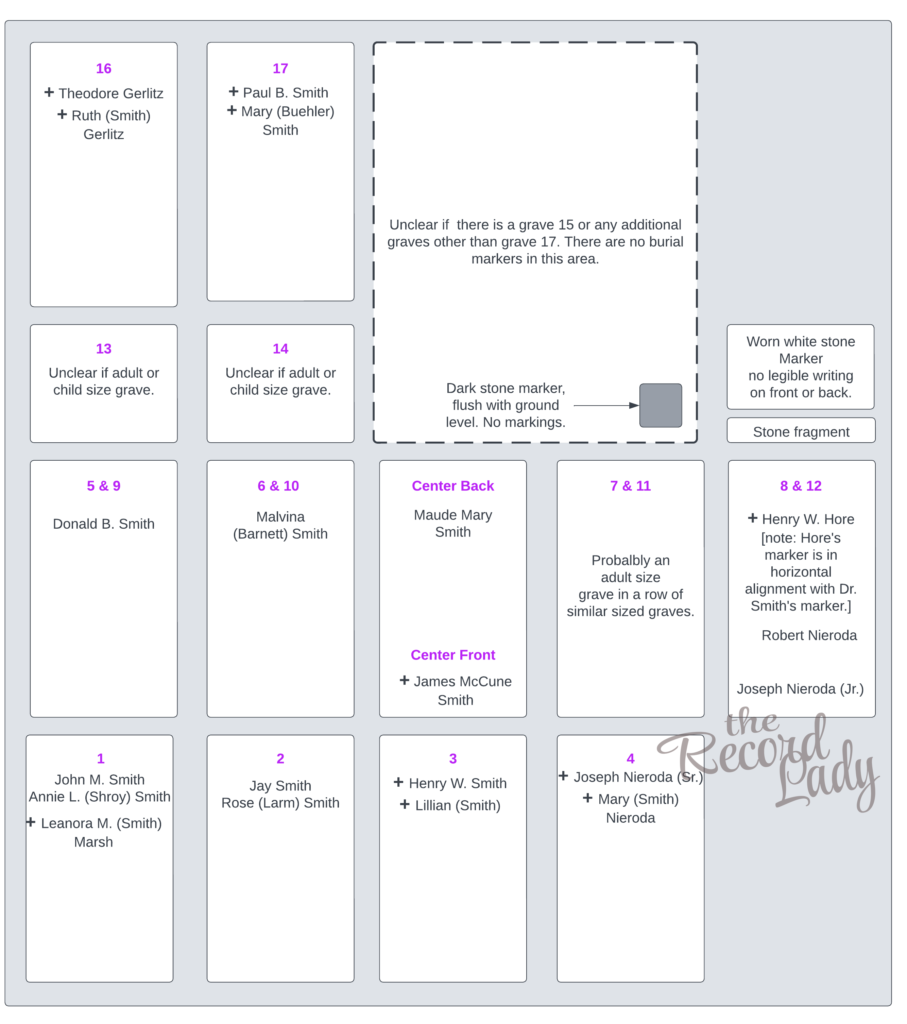In my book Pryor Wives I used advice from Elizabeth Shown Mills’s, a noted genealogist. She encourages the investigation of F.A.N.s (Friends, Associates, and Neighbors). It took some “heavy sifting” to put together the records to create a neighborhood around a Mrs. Elizabeth Pryor. Was it worth it? There was no birth, marriage, will, burial, or death certificate. Knowing the stories of the people in her neighborhood made her story richer and made a connection over decades and hundreds of miles.
A F.A.N. group is also helpful with investigating gravesites. Find A Grave (https://findagrave.com) is based on individual memorials that often contain photographs of a marker and details of the person’s life. It’s easy though to look at this as stand-alone evidence. The website can be used to dig deeper.
Are There Attached Kin?
Find A Grave allows memorial manages to connect memorials. If a manager has connected memorials, the links appear under the title Family Members. Unfortunately, if you are not the manager you will have to suggest possible connecting kin by clicking on the “Suggest Edits” link.
More Kin In The Same Cemetery?
We do not have to be satisfied with one memorial. Clicking the link to the right, the cemetery name, will show all burials in the cemetery under the surname that was searched.
Contact the Cemetery
I want to know if the burial was in a family plot. I want to know who is buried next to who. Are they buried with family? When trying to piece together a genealogy I want to know who all are sharing the same ground for eternity. I took this approach when I did a survey of Dr. James McCune Smith’s family plot.
Larger, modern cemeteries may have a grave locator on their website. Hollywood Forever Cemetery has a grave locator at https://hollywoodforever.com/about/cemetery-map/. You can look up famous folk or your loved ones.
Email or a phone call to a cemetery can also produce results. The person answering the phone may have an proprietary computer system to look up burials, or they have access to the original cemetery books that record burials.
Finally, Create A Diagram of The Graves
A genealogist’s dream would be to have a diagram on Find A Grave memorials to show where the grave is situated. It would certainly answer who was buried next to who. A diagram of burials can reveal or clarify what information about an ancestor. An example, the diagram of graves in Dr. James McCune Smith’s plot (see Figure) shows how to draw out grave positions. Creating a diagram may reveal the following,
- The order in which burials occurred.
- Relationships, such as a husband and wife buried next to one another.
- The person’s position in the family–Dr. James McCune Smith was buried front and center
- Insights into how the plot was used. Dr. Smith’s plot had multiple burials in individual graves.
Figure: Estimated Position of Burials at Dr. James McCune Smith Plot (Grave Numbers and Location of Grave Markers)

Vanessa Wood, Estimated Position of Markers At Dr. James McCune Smith Burial Plot, viewed 29 May 2021, Cypress Hills Cemetery, Brooklyn, NY. + used to indicate grave marker is present and corresponds with the plot number listed by Cypress Hills. The plot was originally divided into small graves for children, so adult burials cover two of these graves. Figure created with aid from the “List of Burials at Lot 2, Section 130 At Cypress Hills Cemetery,” by archivist at Cypress Hills Cemetery, Brooklyn, NY, 14 July 2020 and notes from telephone conversation on 6 August 2021with Cypress Hills Cemetery administrative office.
FEATURED IMAGE: Vanessa Wood, “Baltimore Church and Graveyard,” author’s collection



